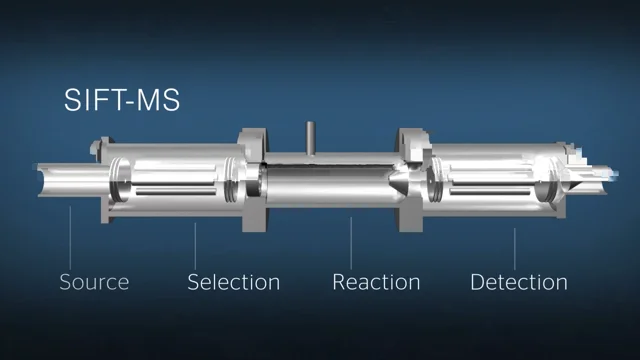
SIFT-MS: Comprehensive Insights into Soft Chemical Ionization – Part 1
Soft chemical ionization is a powerful analytical technique employed in Selected Ion Flow Tube Mass Spectrometry (SIFT-MS) for the precise detection and quantification of trace gases, particularly volatile organic compounds (VOCs), present in ambient air samples. This method hinges on the interaction of selected reagent ions with VOCs within a controlled environment, allowing for rapid and accurate measurement of analyte concentrations.
Operational Principles of SIFT-MS
In SIFT-MS, the process begins with the introduction of an air sample containing VOCs into a fast-flow tube reactor. Reagent ions, such as H3O+, NH4+, NO+, and O2+, crucial to ionization, are generated via microwave discharge in moist air under typical pressures around 0.5 mbar. These ions are then selectively filtered by their mass-to-charge ratio (m/z) using a quadrupole mass filter and injected into the carrier gas stream. The energies used must be low enough to prevent dissociation during collisions with carrier gas atoms or molecules.
Historically, the carrier gas used was helium, maintained at approximately 1 mbar. However, recent advancements have seen a shift towards using nitrogen at a lower pressure of about 0.4 mbar. This change is not without challenges, as it alters the dynamics of ionization and the overall performance of the SIFT-MS system.

Data Acquisition and Analysis
Detection and quantification of VOCs in the sample are achieved downstream with a quadrupole mass spectrometer (QMS). Data can be collected in two primary modes: full scan (FS) mode, which provides a comprehensive mass spectrum across a wide range of m/z values, and multiple ion monitoring (MIM) mode (or selected ion mode [SIM]), where the QMS rapidly switches between specific m/z values of interest. In MIM mode, these ions are counted over predetermined dwell periods, allowing for precise measurement of VOC concentrations.
Accurate identification and quantification of neutral trace VOCs necessitate a deep understanding of various parameters, including rate coefficients governing ion-molecule reactions, product ions produced during these reactions, and critical physical parameters such as carrier gas and sample flow rates. The choice of reagent ion depends heavily on the chemical nature of the target VOC; for instance, H3O+ is highly versatile, while NO+ is particularly valuable in specific applications. Rapid switching between these reagent ions is crucial for dynamic measurements, enabling the real-time monitoring of fluctuating concentrations, such as metabolites, in breath samples.
Challenges and Development Efforts
Challenges in SIFT-MS analysis include the correct identification and differentiation of analytes, especially in complex mixtures where overlaps can occur between analytes. Addressing these challenges requires the meticulous development of quantification methods and the construction of extensive libraries of rate coefficients and product ions. These libraries are integrated into SIFT-MS instruments to facilitate simultaneous analysis of multiple VOCs in a single sample.
The construction of these libraries involves extensive experimental work, akin to the creation of comprehensive libraries of gas chromatography-mass spectrometry (GC-MS) spectra. Hundreds of reactions involving reagent cations like H3O+, NO+, and O2+ with various classes of VOCs (e.g., alcohols, aldehydes, ketones) are studied, with typically 10–20 representative compounds included for each VOC class. This ongoing effort is crucial as new compounds are continually identified for SIFT-MS analysis, necessitating the acquisition of kinetics data and expanding the scope of the technique.
Insights into Ion Chemistry and Future Prospects
The study of ion chemistry within the thermalized conditions of SIFT-MS flow tube reactors provides valuable insights into fundamental chemical processes. These insights not only enhance the accuracy and reliability of SIFT-MS measurements but also contribute to broader scientific understanding in analytical chemistry and atmospheric sciences.
Looking forward, the refinement and expansion of SIFT-MS capabilities will continue to be driven by advancements in instrumentation, method development, and the ongoing characterization of ion-molecule reactions. These efforts aim to further improve the sensitivity, specificity, and versatility of SIFT-MS in addressing diverse analytical challenges across environmental monitoring, clinical diagnostics, and industrial applications.
In conclusion, Selected Ion Flow Tube Mass Spectrometry (SIFT-MS) represents a sophisticated and powerful analytical tool for the rapid and precise analysis of VOCs and trace gases in complex matrices. Its ability to utilize multiple reagent ions and operate under controlled conditions makes it indispensable in modern analytical chemistry, contributing significantly to scientific research and practical applications alike.




